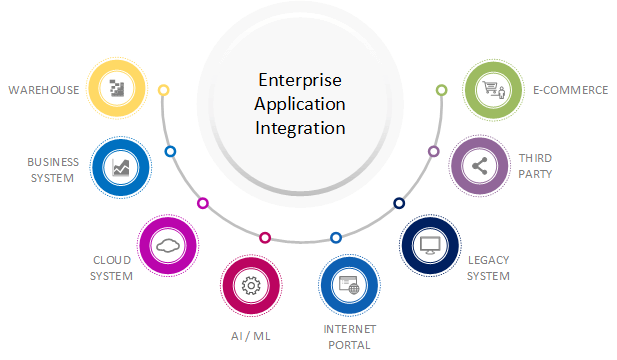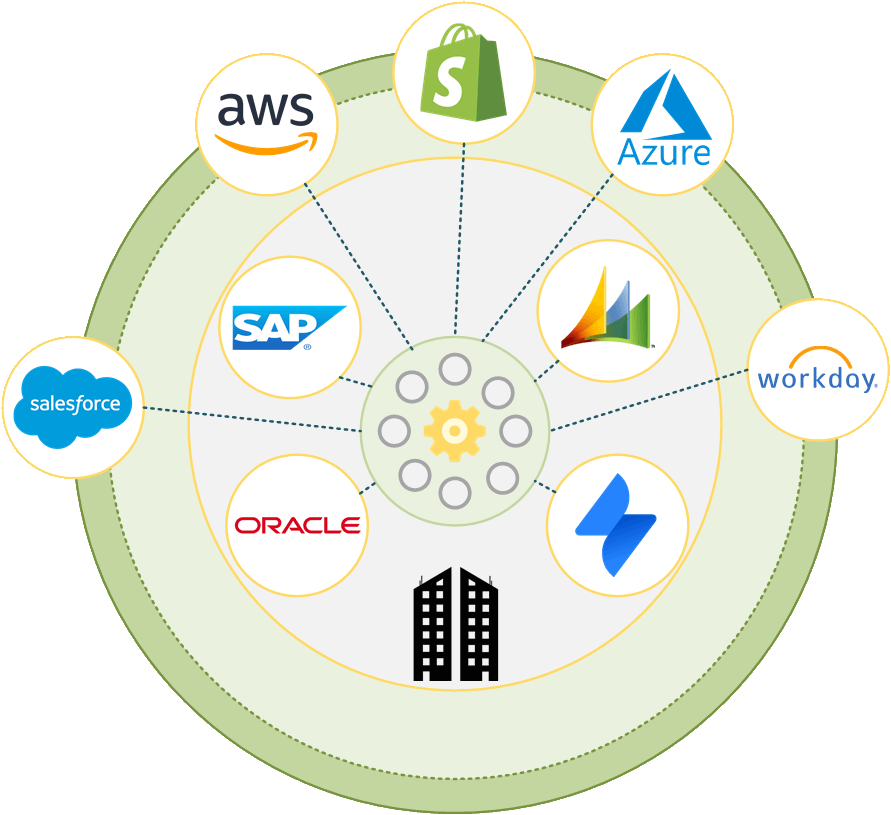Integration – what is the true meaning of this word? Nowadays, you have probably stumbled upon this word a lot of times, and it doesn’t seem as familiar to you as you would want it to be. The sole purpose of this article is to shed a light on the subject of INTEGRATION, which for many people is not clear. We will try to describe the integration as simply as possible, so that you get the notion of the same, and see whether you find yourself fit for this attractive field in the IT industry.
Defining Integration
We can define integration as a process of merging small parts or sub-systems into one system that functions as a whole. In the IT industry, integration is ‘the end result of a process whose purpose is to connect the different sub-systems into one’! The data, which each of the sub-systems has, becomes part of one bigger system that will share the data easy and fast whenever needed. More specifically, integration is the process of connecting different IT systems, services and/or software so that they can function together. What you should know is that integration isn’t used only for connecting internal systems within one organization, but also for connecting it to third-party systems.
Let’s compare it with a real-life example. Imagine that integration is a puzzle. As we know, a puzzle consists of a lot of different parts and to get one complete picture we need to solve the puzzle, i.e. we need to connect all those small pieces into one. The same goes with the integration as well, to get one functional system composed of many different components, we need to connect them correctly.

Reasons and goals
The main goal of every company is to give the best service to its clients and to be several steps ahead of its competition. In order to do that, they should have their different systems seamlessly connected between each other which will lead to faster information flow and decreased overall operational costs.
There are a lot of reasons why big companies decide to use integration. Some of them are the following:
a) Productivity increase
– System Integration allows employees to focus on more important tasks rather than doing manual information transfer which further leads to increased productivity and happier employees.
b) Cost-saving
– System Integration enables easy implementation of a new system, eliminates the need for maintaining and upgrading hardware, and decreases the manual work which leads to a significant reduction in operational costs leading to an increase in the profit margin of the company.
c) Increased visualization and increased analysis of the company’s data
Models of Integration
There are several integration models; in this post, we will mention only some of them:
1) Point-to-Point model
– This model involves the integration of multiple systems via previously defined connectors. With the point-to-point model, all of the systems are connected. When you alter something in one system, it requires changes in all of the connected systems. This type of integration is time-consuming, and besides that, it is not cost-effective at all. For example, if we have to connect ten systems one to each other, we will need 45 separate integrations, and when we have a change in one of the systems, then nine of the connections would have to be changed as well.
2) Bus model (or more commonly known as ESB)
– In the bus model or Enterprise Service Bus each sub-system has one single interface for communication with the other sub-systems which are connected among themselves (so, if we have ten systems, we have ten connections). The benefit of this method is that when one sub-system changes, the other sub-systems aren’t affected. For example, imagine that you are living in a big city, and five companies have the same data about you. If you change some of the stored data, with point-to-point architecture you would have to change the data in every company, whereas with the Enterprise Service Bus we have one centralized place where the data is stored, and when we change parts of it, the same will be changed everywhere.
3) Service-Oriented Architecture model
– SOA model is a type of model which uses independent services to create applications, and these services are provided to the other components via a communication protocol over a network. Nowadays many applications use SOA – let’s take, for example, the games which use inbuilt functions to run. The application might need GPS, so it uses the inbuilt GPS services of the device. Find out more about SOA here.
4) Microservices Architecture model
– Microservices Architecture model is a variant of service-oriented software architecture where independent microservices are used to make an app. The difference between SOA and Microservices is that the services in the Microservices Architecture model are very small and they provide one or two specific functions.
The integration process has 6 phases:
- Acquiring definitions, specifications, and requirements
- Analysis
- Architecture design and management plan
- System integration design
- Implementation
- Evaluation and maintenance

Tools
Nowadays, you can find a lot of integration platforms. There are more and more solutions that are completely on the cloud and they enable easy development and fast delivery of the solution to the client. Some of the integration platforms and tools which are among the top in the Gartner Quadrant are: MuleSoft, TIBCO, SnapLogic, Informatica, Boomi.
System Integration Benefits
There is a great number of benefits of system integration. We will list only five of them:
1) Improved real-time visibility – the constant connection of the data enables everyone to have access to real-time data which further leads to better decisions because the business decisions are made on the basis of correct data, not on the gut instinct;
2) Process efficiency and the quality of the team increases – integration allows employees to focus on more important tasks rather than on manual insert of data into the system and even more gives them enough time to focus on improving their skills by solving far more important and challenging tasks;
3) Increased sales – the constant flow of correct information allows the team to timely answer user’s requests as they have constant access to all information;
4) Storage of useful data – when you have all the useful data stored in one centralized place and timely updated, you will eliminate the possibility for incorrect analysis;
5) Cost-saving – when the systems are integrated, all of the business phases are cost-saving – since the tasks will be automated, the team will be able to focus on searching new clients and development of new skills which will enable the business to grow.
Why should you become an Integration Developer?
In times when the IT industry is at its peak, and more and more people are focusing their career path towards it, you might find yourself on a crossroad which “technology” road to take. If you are in doubt, we suggest you continue on the integration path. Why? Here are six reasons why you should consider starting a career in system integration:
1) If in other programming languages you need to write a lot of code, and wonder why your code isn’t working, in integration you don’t have so much code writing;
2) The focus in integration is on the business logic – you need to understand the business and develop its logic, not focus on code;
3) Widely-known companies use integration, and integration developers work only on big projects – if you are a person that is ambitious and wants challenges, this is where you will find yourself;
4) A new area in the IT industry where you get the chance to learn and improve, and there is a need for skilled resources in this field;
5) As it is used widely by big corporations, the value of the work done by an integration developer is appreciated a lot in terms of salary;
6) And finally, there is saying which most of the Integration Developers say: Once you start integrating systems, you will never think about changing your career.
What do you need to get into this field? If you are a beginner, you need to know Basic Programming Concepts, and you need to be ambitious, fierce, devoted, and ready to fail and start over. The fruit that you will reap afterwards will be fulfilling for you both on a personal and professional level.
For more info on the integration, you can contact us, and if you want, you can join us in our integration quest.

